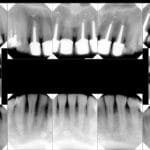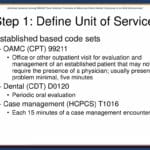This article explores the mucogingival junction (MGJ), a critical part of your mouth that plays a significant role in your oral health. Understanding its importance can help you maintain a healthy, vibrant smile. We’ll cover everything from its location and function to potential problems and their solutions.
Decoding the Mucogingival Junction
The mucogingival junction (MGJ) is the point where your gums (gingiva) meet the softer lining of your lips and cheeks (alveolar mucosa). Think of it like the shoreline where the land meets the sea. This junction acts as a protective barrier, preventing bacterial invasion and inflammation. A healthy MGJ is essential for maintaining strong, healthy gums and preventing a range of dental issues.
Why is the MGJ Important?
The MGJ is a key player in your overall oral health. It helps maintain the stability of your gums, protecting against recession, which is when your gums pull back, exposing more of your tooth’s root. This can lead to increased tooth sensitivity and a higher risk of cavities and gum disease. A healthy MGJ also contributes to a more aesthetically pleasing smile.
The Location and Role of the Mucogingival Junction
You actually have three MGJs in your mouth: one on the outside of your upper jaw and two on your lower jaw (one on the outside and one on the inside). Interestingly, the roof of your mouth (palate) lacks an MGJ because the tissue there is directly attached to the bone. The MGJ isn’t merely an anatomical landmark. It serves as a vital defense against harmful bacteria, shielding the underlying bone and supporting structures of your teeth.
Identifying Your MGJ
While dentists have specialized tools and techniques for accurately locating the MGJ, you can get a general sense of its location by gently pulling your lip or cheek outward and pressing inward on the area below your gums. The point where the movable tissue (alveolar mucosa) meets the immobile gum tissue (gingiva) is likely your MGJ. You can learn more about how professionals precisely detect the MGJ [https://www.lolaapp.com/how-do-you-detect-the-mucogingival-junction].
Safeguarding Your Mucogingival Junction: Prevention Tips
Just like any other part of your body, the MGJ needs proper care to stay healthy. Fortunately, maintaining a healthy MGJ often involves simple yet effective practices:
- Brushing and Flossing: These daily habits are fundamental for removing plaque and bacteria, preventing inflammation that can compromise the MGJ.
- Healthy Lifestyle Choices: Avoiding smoking and chewing tobacco is paramount. These habits are detrimental to gum health and significantly increase the risk of MGJ damage and recession.
- Regular Dental Visits: Professional cleanings and checkups are essential for early detection of any potential problems. Your dentist can identify early warning signs and recommend appropriate preventive measures or treatments.
When the MGJ is Compromised: Treatment Options
Even with the best preventive care, the MGJ can sometimes become compromised. Several treatment options are available to address these issues:
Surgical Options:
- Soft Tissue Grafts: This procedure involves taking tissue from another area of your mouth (often the palate) and grafting it onto the affected area to reinforce the weakened junction. This helps cover exposed roots and improve gum health.
- Guided Tissue Regeneration: This technique uses a special membrane to encourage your body to regenerate lost tissue and naturally rebuild the junction.
- Crown Lengthening: This procedure reshapes the gums and bone tissue to expose more of the tooth structure, improving both aesthetics and cleanability.
Non-Surgical Options:
For less severe cases, non-surgical treatments may be suitable. These can include deep cleaning to control inflammation and medications to promote gum health. Your dentist will determine the best approach based on your individual needs.
Beyond the Basics: Emerging Research and Insights
Ongoing research continues to deepen our understanding of the MGJ and its intricate connections with other aspects of oral and overall health. Some experts believe that genetic factors may also play a role in an individual’s susceptibility to MGJ problems. This highlights the importance of staying informed and consulting with your dentist for personalized guidance.
Learn more about nose bleed ICD 10 and educate yourself about the nurse aide registry NC.
| Problem | Likely Cause(s) | Possible Solution(s) |
|---|---|---|
| Gum recession | Smoking, chewing tobacco, poor hygiene | Soft tissue grafts |
| Tooth sensitivity | Exposed tooth root due to recession | Gum grafts, desensitizing toothpaste |
| Increased cavity risk | Plaque buildup near the gum line | Improved hygiene, fluoride treatment |
| Periodontal disease | Bacterial infection | Deep cleaning, antibiotics |
| Feature | Description |
|---|---|
| Location | Three in your mouth: one on the outer surface of the upper jaw (maxilla), two on the outer and inner surfaces of the lower jaw (mandible) |
| Absence | None on the palate (roof of mouth) due to direct tissue attachment to bone |
| Function | Acts as a barrier against bacteria, protecting gums and underlying bone |
| Clinical Use | Helps dentists evaluate periodontal health and determine necessary treatments, including mucogingival surgery |
| Health Impact | Changes like recession can indicate gum disease, potentially linked to other health problems in some cases |
Key Points:
- Definition: The mucogingival junction is the border between the tough gum tissue around teeth and the softer lining of the lips and cheeks.
- Importance: It protects the gum tissue from recession and damage, affecting tooth sensitivity and overall oral health.
- Causes of Damage: Smoking, chewing tobacco, and poor oral hygiene can weaken the mucogingival junction, leading to gingival recession.
- Prevention: Brushing and flossing, avoiding harmful habits, and regular dental checkups.
- Treatment Options for a Compromised Mucogingival Junction: Surgical options include soft tissue grafts, guided tissue regeneration, and crown lengthening. Non-surgical options include deep cleanings and medications.
- SYBAU See You Baby Meaning: Gen Z Slang Evolves - July 1, 2025
- Unlock Your Inner Youth: Lifestyle Secrets for a Vibrant Life - July 1, 2025
- Decode SYBAU Meaning: Gen Z Slang Explained - July 1, 2025







2 thoughts on “Understanding Your Mucogingival Junction: A Guide to Health and Prevention”
Comments are closed.